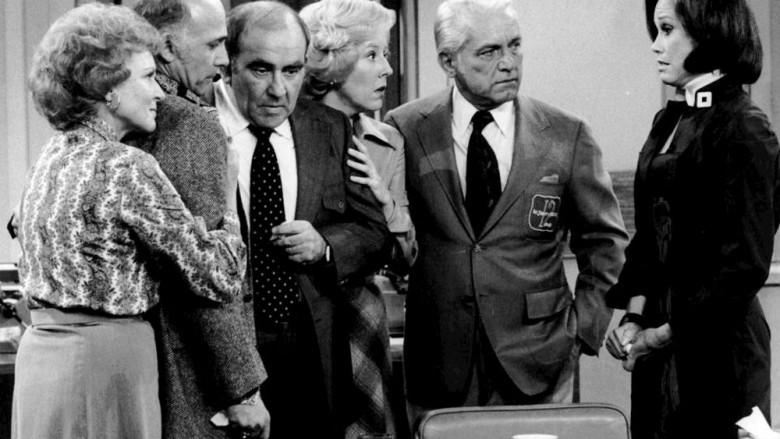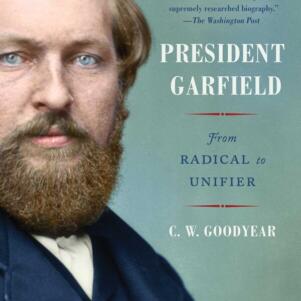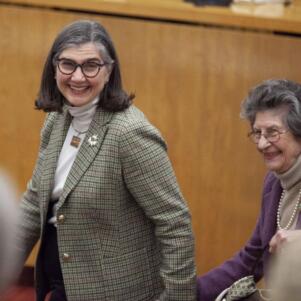Gray dating, and making it after all
By Diane Kilgore | October 7, 2015, 6:09 EDT
 Courtesy of Wikipedia
Courtesy of Wikipedia Anyone who came of age in the ’70s will remember “The Mary Tyler Moore Show,” staring Ed Asner, Valerie Harper, Gavin MacLeod and, of course, Mary Tyler Moore in the lead role. The show, a form of social commentary about being female and single, was honored with three Emmys for Outstanding Comedy Series and a Peabody award for offering viewers “a consistently sensitive portrayal of a career woman in today’s changing society.”
Little did we realize “The Mary Tyler Moore Show” would also be a bellwether for our ongoing cultural metamorphosis.
Considered revolutionary at the time, the main character, Mary Richards, was originally intended to be a newly divorced gal. Sensitivities being what they were 40 years ago, divorce was too controversial for Saturday night television. Instead, Richards was rewritten as a single gal who lived life fully; at work, with friends, and on occasional dates with a variety of men. Her character reflected the show’s theme song: “Love is all around, no need to waste it, you can have the town, why don’t you take it. You’re gonna make it after all.”
In those days, a young career woman living alone was a rarity. Today, more than 50 percent of adult Americans — 31 million people — live alone, up from 22 percent in 1950, according to NYU professor Eric Klineburg, author of “Going Solo: The Extraordinary Rise and Surprising Appeal of Living Alone.”
Klineburg contends that our society has embarked on a “remarkable social experiment” over the past half-century: “We have so many social options that there are longer periods of singleness. This group of Baby Boomers is having a seismic impact on culture, business and politics.”
Klineberg refers to single Baby Boomers as “Singletons” in “Going Solo” and shows how they are far less isolated, less narcissistic and more socially engaged than commentators presume.
“There are so many singles,” he wrote, “there’s no mandatory rush to settle into a relationship with someone other than your soul mate. Especially after divorce, living alone gives you a chance to kind of get back on your feet and figure out who you are and what you want in your next relationship.”
Like Moore’s fictionalized character, all of the real-life career women interviewed for this article find themselves living independent lives. They are thoughtful, well-educated and making it on their own – although not necessarily by choice. For many women in 2015, “making it on their own” is not all it’s cracked up to be. Many would prefer to have the companionship of a consistent romantic partner. But, sadly, this continues to be more fiction than reality for most.
What was considered an amusing non-conventional lifestyle in the 1970s is now conventional, and not at all funny. Adults living independently are no longer considered revolutionary. According to Klineburg, living alone has become society’s most popular domestic unit in the United States.
What is revolutionary is the way single middle-aged women are opting to manage their lives. After a long workday, and on weekends, the Internet provides a window to possible dating with romance an option, but not a necessity. Women are looking for relationships that compliment a life already rich, interesting and rewarding.
No longer dependent on random meetings or old fashioned blind-date fix-ups, single women turn to “e-dating.” Scores of online dating sites connect profiles that claim to match an individual’s personalized interests with another’s. Christian Mingle and J-Date are for single people who want to explore faith-based relationships. Our Times allows folks over 50 to browse profiles and pictures, match electronically, and pick a time and place to meet.
In theory, it’s all so simple. Women will initially visit websites with an optimistic sense of romantic curiosity. Yet what cannot be calibrated, no matter the algorithm, is character. Sometimes the guy who looked great on “e-paper” turns out to be a bit of a snooze. Conversely, some men feel that a spontaneous spark guarantees breakfast in bed.
Today’s mature women feel as they did in the ’70s with “love all around,” and “no need to waste it,” but are not interested in just hooking up for sex. Sadly, they often find that many men on electronic sites consider sex to be the coin of the realm. It’s become somewhat of a bargaining chip on first dates. “If you won’t, someone else will” is the war cry of men who feel there’s an ongoing, on line, battle of the sexes.
Men often believe they hold most of the cards. According to one woman’s experience, some men expect to see “papers” which these days means recent lab work that proves negative STD test results before the date progresses. Modern day women frequently dismiss these would-be dates after they play a hand or two and will look at multiple sites for companionship with new faces. Regrettably, some men tend to re-cycle themselves, showing up on multiple sites, under another banner’s proposals.
By choice and necessity, experienced single women of today are broadening their definition of love. They find fulfillment nurturing and being nurtured by their first family, friends and advancing careers. They are also, as Klineburg points out, actively engaged in non-romantic social and civic lives.
Finding Mr. Right is more of a process than a main event. Women are seeking life partners with maturity and consistency, not a series of meaningless hookups. Without a promise of a fuller and emotionally intimate relationship many women find dating at mid-life to be exhausting. They remain optimistic, but wonder where all the good guys are.
As Jon Birger points out in his book “Date-onomics,” when it comes to dating, “It’s not that he’s just not that into you; it’s that there aren’t enough ‘hims’” to go around. According to Birger, “the man deficit is real.” Using a combination of demographics, game theory, and statistics, he has found that there are four single, college-educated, heterosexual women for every three men of the same background in most urban areas. “Date-onomics” explains a lopsidedness of dating, and how, paradoxically, the most accomplished women have the greatest difficulty finding a partner. Yet they are far from despairing in old-fashioned spinsterhood.
Sophisticated women over 50 opt out of competing with women in their 20s and 30s for the carnal attentions of recycled men. They are living full lives at work, with friends and family, and occasional dates. As the theme song predicted, “You’re gonna make it after all.”
Diane Kilgore is a Boston-area blogger.










